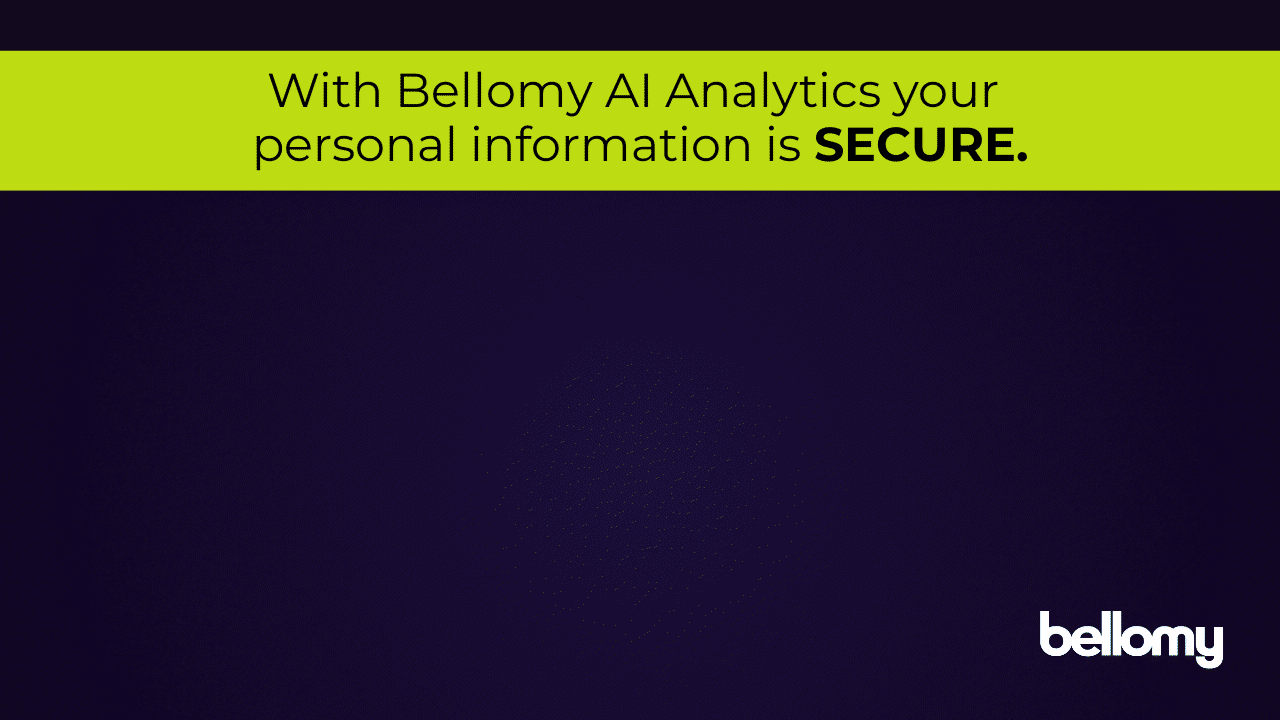How Bellomy’s AI analytics tool keeps data safe and secure
These days, privacy and data security are common concerns across business and the general population. In the field of market research, much of this concern focuses on AI in general and AI-driven text analytics tools in particular.
As a full-service market research company operating since 1976, Bellomy’s deep experience includes industries among those with the highest need for security — like financial services and healthcare. So we understand the risks and accordingly have had a formal, comprehensive cybersecurity program to protect client data in place for a very long time.
In this article, I’ll explore how we keep sensitive information safe and private in our AI-driven text analytics tool (aka Bellomy AI Analytics for Text).
What’s behind the worry
Specifically, businesses are concerned about sharing things like proprietary and client information on an unsecured platform and that their datasets could even be used to help train AI models. These concerns are understandable, given that websites like openai.com have statements about the models improving over time based on the data users input. (From the Help page: “We retain certain data from your interactions with us, but we take steps to reduce the amount of personal information in our training datasets before they are used to improve our models.”) This suggests that personal information — or in the case of many market researchers, their customers’ personal data — is not secure when using AI tools.

Nothing personal leaves our ecosystem — ever
As I’ve already noted, Bellomy’s security process is established and longstanding. General, companywide measures include end-to-end encryption (transit via TLS; storage via AES256) and regular external penetration tests. Members of our teams dedicated to security and privacy hold industry certifications from ISC2, EC-Council, Cisco and CompTIA. And all Bellomy products and services are ISO 27001 certified, SOC 2 Type II audited and HIPAA compliant.
Beyond this, our AI Analytics for Text tool has high levels of built-in protection to ensure no personal information is shared beyond Bellomy. While we use an ensemble AI approach to text analytics, the tool features our own secure, proprietary AI model that never sends any personally identifiable client information to external models. Additionally, we’ve created a proprietary process that obfuscates data shared with external models. That means no names, email addresses, phone numbers, etc., ever leave Bellomy’s ecosystem.
A clean and secure cloud space
Users access the text analytics tool – or any of Bellomy’s technology tools – through the personalized, customizable Bellomy Research Cloud, which houses Bellomy’s additional research technologies. Regular updates and maintenance to the cloud’s system keep the AI current and at optimal performance. The Bellomy Research Cloud also features tight permissions that can be set to a granular level within an organization’s account, so what happens in your cloud space stays in your cloud space.
Past experience prepared us for the here & now
Security is in the Bellomy DNA, and it’s applied thoroughly and consistently across our business model, including our tools, technologies, and our comprehensive research services. Because of our longstanding commitment to security, we already had a strong foundation and were well-positioned to adapt when AI sprang onto the scene. It’s just one way our deep history in market research and focus on superior service benefits our clients.
For more information about Bellomy’s approach to security, visit www.bellomy.com/security.
Justin Bailey has served Bellomy for almost a decade and is a member of the strategy team. His professional experience includes working with clients across a variety of industries including banking, insurance, online brokerage, fintech, and consumer packaged goods. Based in Winston-Salem, N.C., he enjoys running, studying history and listening to audiobooks.

